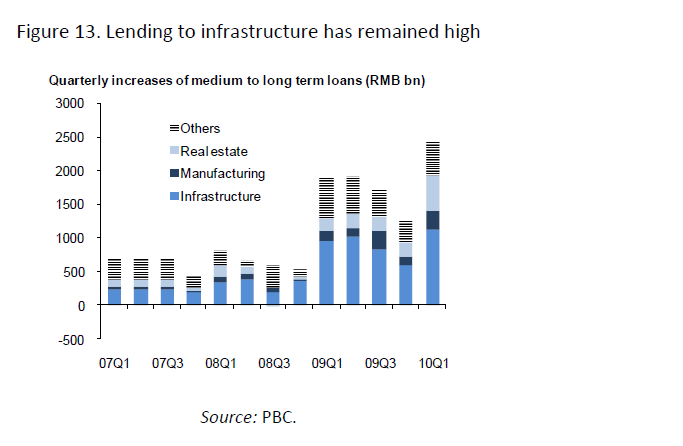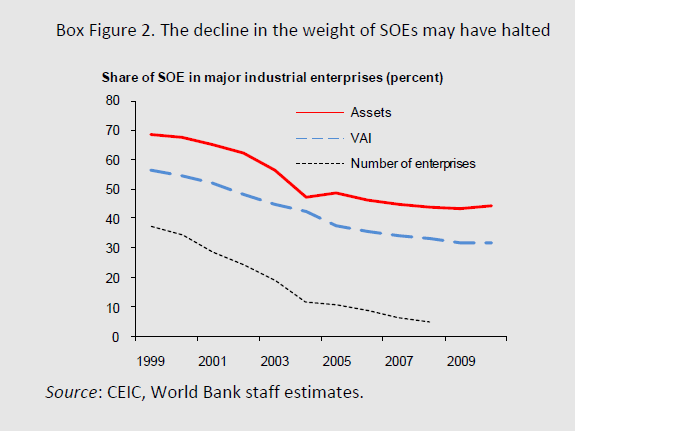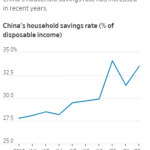The World Bank released its latest China Quarterly Update last month. The following are some of the key takeaways from this report:
1. In the first quarter of this year, a large portion of lending still went to local government investment platforms (LGIPs) as the chart below shows.
After infrastructure, local governments invest heavily in real estate. At the end of 2009, the total local government debt stood at RMB 8 trillion. This type of liberal lending by local governments may cause some of the loans turn into non-performing loans. Heavy government involvement in the real estate sector helps to maintain the current bubble. Hence when the inevitable crash occurs it will be severe. Despite being called the workshop of the world, lending to the manufacturing sector is the lowest.
2. The GDP is projected to grow 9.5% this year and 8.5% in 2011.
3. State-owned enterprises (SOEs) increased their role in the economy during the massive government last year. However in the long term, the weight of SOEs has declined both in terms of assets and production.
4. Consumption is likely to remain strong due to the vibrant and growing labor market.
5. Rising property prices have forced the government to implement new measures to cool down the market. Some of these measures include raising the minimum required and mortgage interest rates.
6. Stock prices have declined sharply on worries about policy tightening. The Shanghai Composite index is one of the worst performers in the world this year YTD and the index is well inside the bear market territory.
7. Despite the expansionary monetary policies undertaken since the end of 2008, inflation is likely to remain contained this year.



